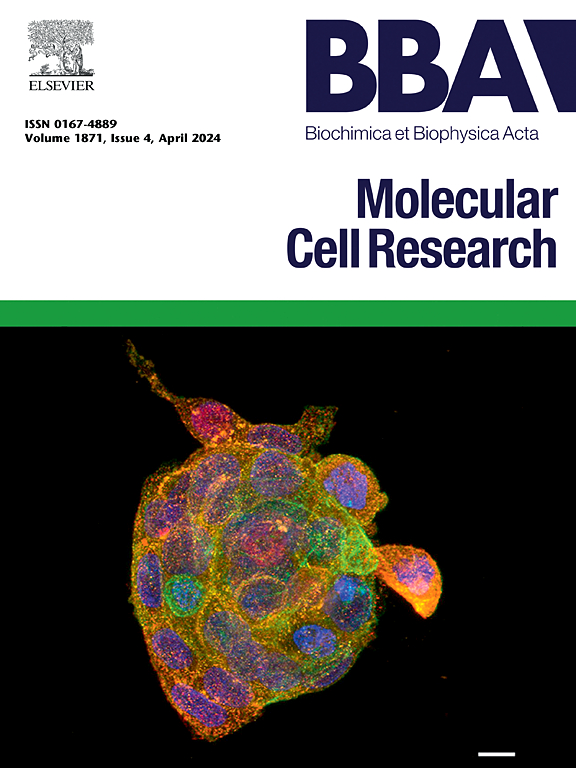5-HT 促进胰腺 α-β 细胞转分化
IF 3.7
2区 生物学
Q1 BIOCHEMISTRY & MOLECULAR BIOLOGY
Biochimica et biophysica acta. Molecular cell research
Pub Date : 2025-04-11
DOI:10.1016/j.bbamcr.2025.119958
引用次数: 0
摘要
5-HT在代谢应激期间维持葡萄糖稳态和抑制胰高血糖素分泌中的作用已得到充分证实,但其对α细胞身份的影响尚不清楚。在本研究中,我们发现5-HT抑制了小鼠胰腺α细胞系中α细胞标记物如Arx和Gcg的表达,同时增强了β细胞标记物的表达。我们进一步发现,5-HT处理显著增加了离体人和小鼠胰岛中Gcg+Ins+和Gcg+Nkx6.1+细胞的百分比。胰腺α细胞谱系示踪技术研究在高脂饮食和链脲佐菌素(HFD + STZ)诱导的糖尿病模型中,我们观察到5-HT处理显著降低了tdTomato/tdTomato小鼠的随机血糖水平,增加了tdTomato+Ins+、Gcg+Ins+和Gcg+Nkx6.1+细胞。此外,原位检测人类胰腺中5-HT的产生显示人类T2D患者β细胞中5-HT的表达减少。这些发现表明,5-HT治疗诱导α细胞向β细胞的转分化,可能有助于T2D中β细胞质量的恢复。本文章由计算机程序翻译,如有差异,请以英文原文为准。
5-HT promotes pancreatic α-to-β cell transdifferentiation
The role of 5-HT in maintaining glucose homeostasis during metabolic stress and inhibiting glucagon secretion is well documented, however, its effect on α cell identity remained unclear. In this study, we demonstrated that 5-HT suppressed the expression of α cell markers, such as Arx and Gcg, while enhancing the expression of β cell markers in mouse pancreatic α cell lines. We further found that treatment with 5-HT significantly increased the percentage of Gcg+Ins+ and Gcg+Nkx6.1+ cells in isolated human and mouse islets. Using pancreatic α cell lineage-tracing Gcgcre+; tdTomato/tdTomato mice, we observed that 5-HT treatment significantly reduced random blood glucose levels and increased tdTomato+Ins+, Gcg+Ins+ and Gcg+Nkx6.1+ cells in a high fat diet and streptozotocin (HFD + STZ) induced diabetes model. Additionally, in situ detection of 5-HT production in the human pancreas revealed a reduction of 5-HT expression in β cells of human T2D patients. These findings suggest that 5-HT treatment induces the transdifferentiation of α to β cells, potentially contributing to the recovery of β cell mass in T2D.
求助全文
通过发布文献求助,成功后即可免费获取论文全文。
去求助
来源期刊
CiteScore
10.00
自引率
2.00%
发文量
151
审稿时长
44 days
期刊介绍:
BBA Molecular Cell Research focuses on understanding the mechanisms of cellular processes at the molecular level. These include aspects of cellular signaling, signal transduction, cell cycle, apoptosis, intracellular trafficking, secretory and endocytic pathways, biogenesis of cell organelles, cytoskeletal structures, cellular interactions, cell/tissue differentiation and cellular enzymology. Also included are studies at the interface between Cell Biology and Biophysics which apply for example novel imaging methods for characterizing cellular processes.

 求助内容:
求助内容: 应助结果提醒方式:
应助结果提醒方式:


